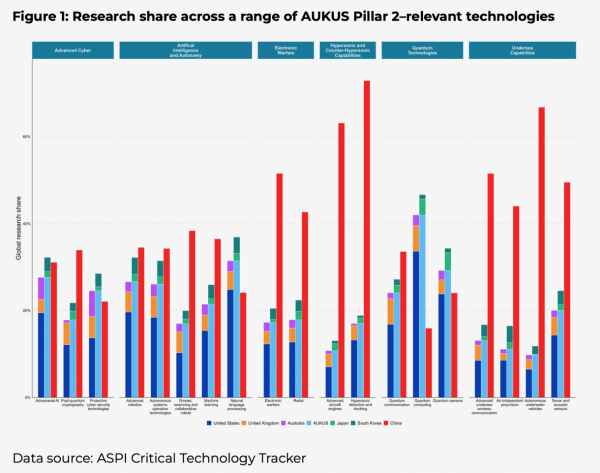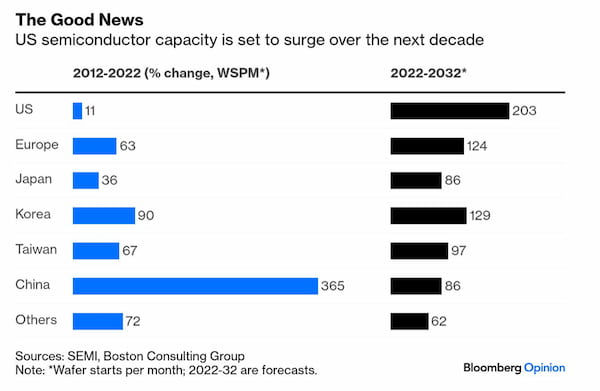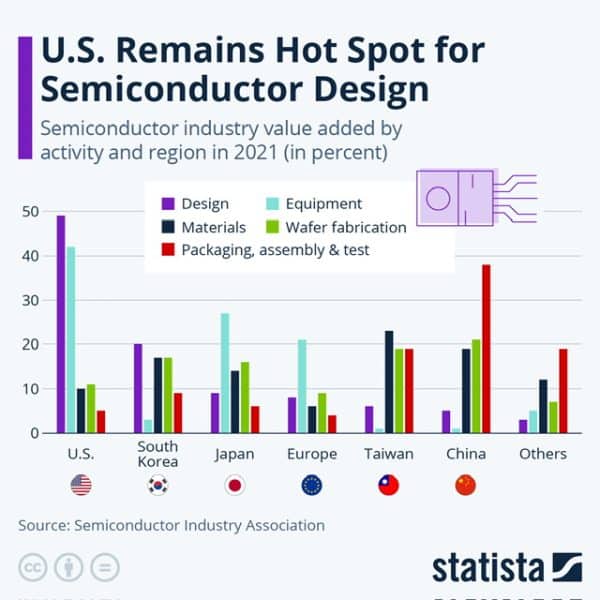AI chips are the US' central geopolitical tool, moving forward. China's technological advancement is set back by a few years when it is cut off from advanced chips, until it eventually catches up again. This is the first of three posts about AI and geopolitics.
Global fragmentation has increased over the past 7–8 years, and this will continue in Trump’s next presidential term.This raises (at least) two questions: “In which direction is the world fragmenting?” and “How, by what means?”
The U.S. will use chips as leverage to win the trade war with China...
Over the coming months, we will get a clearer picture of the direction the U.S. intends to drive this fragmentation.
The answer to the second question, “How,” became clear during Trump’s first presidential term. The tool will be advanced chips—an Achilles' heel for technologies such as AI, advanced defense systems, and consumer products like self-driving cars.
For over the past 10–15 years, China has emerged as a global leader in 57 out of 64 critical technologies of the futureThis includes chip design and development, quantum computers (which will power future AI engines), and, most notably, artificial intelligence. For example, China leads globally in autonomous drones and AI services such as DeepSeek, currently regarded as the leading large language model (LLM) in the world. DeepSeek has even solved problems where Google’s AlphaFold has fallen short.
...because chips provide immediate control over AI development...
The Biden administration continued Trump’s efforts to ensure U.S. strategic autonomy in this area, passing the Chips and Science Act in 2022 and introducing the “Framework for AI Diffusion” (more on this in the next blog post). Trump has advanced this strategy further with the Stargate project in collaboration with Oracle, SoftBank, and OpenAI, which will be discussed in the final post of this series. However, the first critical step in securing the U.S.’s central role in global AI was last fall’s restrictions on which countries can purchase advanced chips. This blog post focuses on that development.
Today, the U.S. is far better prepared than it was at the start of the trade war in 2017. Trade wars are about identifying areas where your opponent is more dependent on you than you are on them. Success also hinges on securing the support of as many allies as possible.
...and the U.S. now controls critical parts of the supply chain.
Advanced industrial chips—those under 7 nm—can only be manufactured using Extreme Ultraviolet (EUV) lithography machines. Dutch company ASML is currently the only producer of EUV machines globally. The world’s leading chipmaker, TSMC, relies on ASML machines for its future production.
At the end of November, TSMC announced it would no longer supply EUV-manufactured chips to customers with Chinese owners, affiliates, or wholesale distribution to China. This decision followed the discovery that some of TSMC’s EUV chips had been used in Huawei products, violating existing restrictions. The sanctions had, in other words, been circumvented. Within 48 hours, the Biden administration announced plans to test compliance with the restriction—a rare, rapid, and specific response. China interpreted this as a coordinated action.
Ultra-Small Chips Are Crucial for Broad Technological Applications Moving Forward...
Products like AI and autonomous vehicles require chips smaller than 4 nm to function efficiently, i.e., with “reasonable” power consumption. According to the "Made in China 2025" strategy, AI is China’s most critical technology—a "must-win battle."
However, today, China can only produce chips using Deep Ultraviolet (DUV) lithography. DUV is typically suited for chips sized between 20 nm and 90 nm. While China has managed to produce 7 nm chips using DUV, it remains an extremely costly and unreliable method for this level of miniaturization. It requires producing many chips and leads to non-commercially viable power consumption.
...Which Is Why Many Countries Are Highly Interested in Strategic Self-Sufficiency...
Since Nancy Pelosi’s controversial visit to Taiwan in August 2022, TSMC has reluctantly shifted its strategy from relying on a single manufacturing site in Taiwan to establishing four additional facilities:
- Dresden, Germany: Production is set to begin in 2027 as part of a joint venture with Bosch, Infineon, and NXP. The German government is subsidizing nearly half of the plant’s $11 billion construction cost—a highly unusual move for Germany. The plant is critical to the EU’s ambition (under the EU Chips Act) to manufacture at least 20% of the world’s chips by 2030. Currently, the EU produces less than 10%.
- Kumamoto, Japan: The first factory began production at the start of the year, while a second, larger facility is expected to commence commercial production in 2027. These factories are part of a collaboration with Rapidus.
- Phoenix, Arizona, USA: Two factories have been established on the outskirts of Phoenix. The first started mass production earlier this year and can produce chips as small as 4 nm. The second factory, expected to begin production in 2028, will manufacture chips as small as 2 nm. A third factory in the area is under consideration, though its production technology has yet to be disclosed.
...Including Countries That Typically Seek Global Independence from the USA
In the fall of 2024, both the UAE and India approached Samsung and TSMC to establish chip manufacturing facilities in their territories. India, in particular, has promising prospects due to existing expertise within companies like Powerchip and Tata Group. This positions India to strengthen its relationship with the Trump administration while advancing its strategic chip production capabilities.
As a result, U.S. chip self-sufficiency is expected to rise sharply over the next decade. The rest of the world is likely to follow suit, albeit at a more gradual pace.
For the US is the only country in the world that is (almost) fully self-sufficient here
Chip manufacturing involves a long and advanced supply chain. If one link in the chain fails, the entire production process can effectively come to a halt. However, the U.S., and to some extent China, have redundant supply options for most aspects of chip production. The smaller the chips, the purer the quartz required. In this regard, the U.S. possesses the only mine in the world (Spruce Pine Mine in North Carolina) capable of producing quartz that, after chemical treatment, achieves 99.9999% SiO2 purity (also known as 6N purity). This quartz can then be processed into polycrystalline silicon with purities of 9N+.
Since the beginning of the year, the U.S. has become the only country in the world that controls the raw materials for chip wafers, the design of chips, and their production. The EU and Japan might (potentially) achieve this by 2027, but they lack control over quartz raw material supplies. As of today, no other known mines in the world match the capabilities of Spruce Pine.
China knows this and therefore focuses its research efforts here
China has observed this scenario becoming increasingly probable over the past few years. As a result, it has implemented three significant capital increases within a few years for its national semiconductor fund, which now totals $48 billion.
China possesses considerable technological expertise and general capabilities to develop EUV lithography techniques independently. However, in this area, it has fallen a few years behind the U.S.
This lag is a key reason why China has instead concentrated heavily on developing quantum computers and communication. China plans to launch an additional two to three quantum communication satellites in 2025.
See the next two blog posts in this series





